Games most young children already know how to play are popular station activities. A printer and cardstock are all you need to create your own science-based versions. Alternatively, inexpensive blank playing cards are readily available online. Attaching printed text and images with clear packing tape produces sturdy, long-wearing cards. An advantage of using blank playing cards is that they will be identical in size and shape. If preparing your own from cardstock be sure to cut carefully so that card size and shape don’t become clues in themselves. For any games used in Kidizen Science modules, printable files for the necessary components will always be provided (though feel free to make your own, of course, to suit your particular preferences and needs).
Though a more expensive option, there are also many online printing businesses that will print custom game cards of a wide range of types, sizes, and materials. These sometimes offer basic functionality for designing cards directly on their website, or you can download their templates and create the card designs using your graphics program of choice.

Detailed below are a few simple card games that are easily adaptable to many topics, and we have used in some of our station-based modules (such as for teaching Electronic Components or the Periodic Table). These include, but are not limited to:
Old Maid
The deck consists of sets of four identical cards plus one. Traditionally the sets of four were depictions of everyday people, fireman, teacher, doctor, baker etc. with the lone card being the “old maid”.
Play: Deal all the cards to the players. Players take turns drawing one card from the hand of the person next to them in turn. When a player gets any matching pair of cards, he removes those two cards from his hand. Play continues until only one person has a card left, becoming the “old maid”.
Example:
In “Lonely Electron“, players are trying to collect sets of various electrical components, without being stuck with the lonely electron.

Go Fish
The deck consists of sets of four identical cards.
Play: The goal is to get as many sets of four (books) as possible. Deal each player six cards. Place the rest in a stack face down on the table. The player (A) asks any other player (B) for all of a certain card in his hand. (Player A must have at least one of those cards in his hand already.) One of two actions happen:
- If player B doesn’t have any of those cards he says “go fish”. Player A takes and adds the top card in the stack to his hand and his turn is over.
- If player B has any of the requested cards, he gives them to player A. Player A can ask player B for a different card, or can ask any of the other players for cards. Player A continues asking for and receiving cards until another player says “go fish”, ending his turn.
- Players remove books from their hands as completed. If a player runs out of cards, he selects a card from the stack. If there are no cards left in the stack that player is no longer active in the game. Play ends when all books have been completed.
Example
In this periodic table-themed version of Go Fish, players are trying to collect groups of elements (e.g., halogens, actinides, alkali metals, noble gases…).
Memory
This game requires pairs of cards. Choose numbers that lead to orderly array such as twelve pairs for a 4 x 6 array, eighteen pairs for a 6×6 array, twenty-four pairs for a 6 x 8 array and so forth. Use fewer card for younger students, more for older. Pairs can be identical pictures or words, an image on one card with its name on the other, or an image on one card with its symbol on the other. The object is to obtain the most pairs.
Cards are laid face down on the table in a rectangular array.
The first player turns over any two cards without removing them from the array. If they happen to match, he then removes them from the array and chooses two more cards to reveal. If those two cards don’t match, he turns them face down in their original locations. The next player then chooses two cards to reveal. A player’s turn continues when he reveals, and removes, pairs of cards. It ends when the revealed cards do not match and are turned face down again.
Be prepared to tidy up the array from time to time to make sure cards remain in their original locations until removed. It can be a challenge for some students not to blurt out the location of a card. The player whose turn it is may use that information to his advantage!
Example
Find the pairs of electronic components:
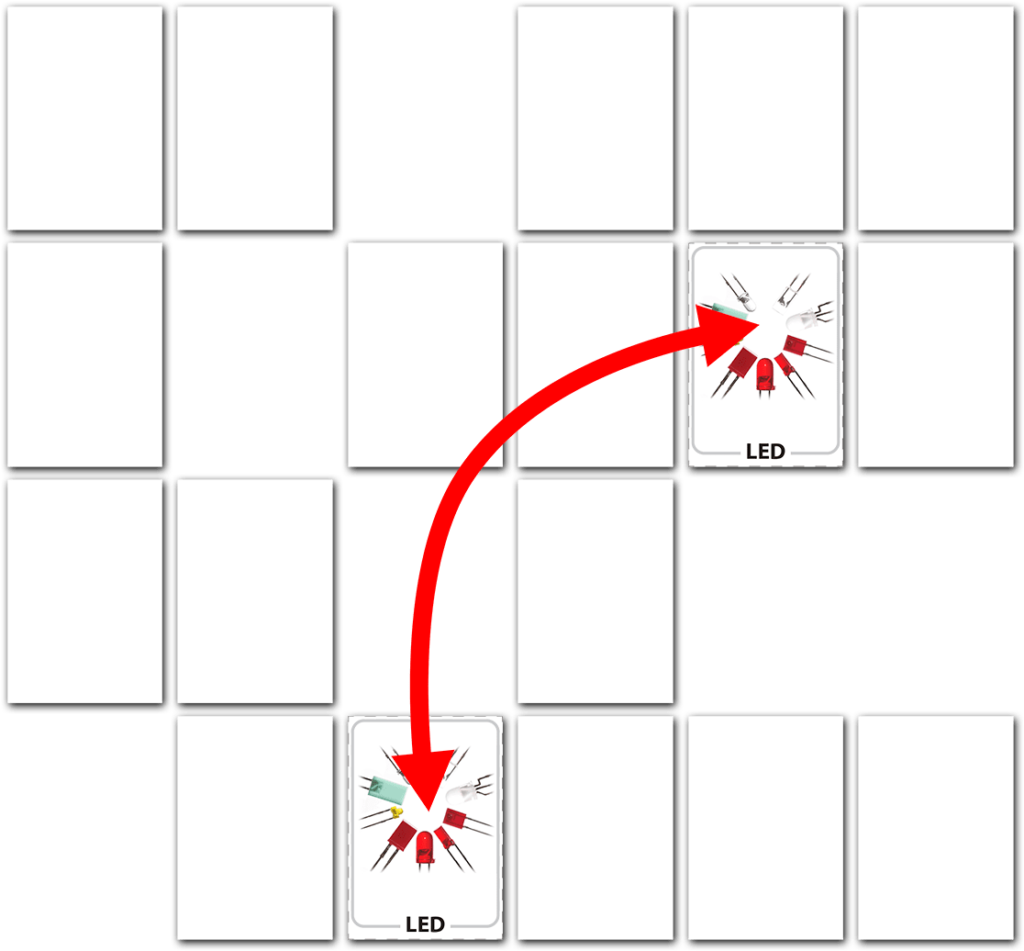
Sequence-Matching Game
This game is played with a deck of numbered cards, each card with a unique, sequential number, for example 1-60. The number of cards to use depends on the number of players:
| Number of Players | Number of Cards |
|---|---|
| 2 | 40 |
| 3 | 50 |
| 4 | 60 |
| 5 | 70 |
| 6 | 80 |
Each player is given a card rack with ten slots. The deck of cards is shuffled and dealt to the players, one at a time. Players put each card into their rack as they receive it, starting with the first slot. No sorting or rearranging is allowed! The remaining cards are placed face-down on the table, becoming the Draw Pile. The top card is placed face-up on the table, forming the Discard Pile.
The goal is to create a sequence of cards from lowest to highest, beginning with the first slot. The first player to do this wins the round.
On each player’s turn, they take the top card from either the Draw Pile or the Discard Pile. That player may then exchange it with one card in their rack, placing the removed card face-up in the Discard Pile. If they drew the card from the deck, they may also discard it without swapping. The turn then passes to the next player. If the Draw Pile runs out, shuffle the Discard Pile to make a new Draw Pile (and form a new Discard Pile from the top card).
Optional Rules
For longer games, you can play multiple rounds towards a target number of points. Each round, the first player to arrange all their cards in sequential order earns 15 pts, with other players earning 1 point per in-order (low to high) card in their rack starting at the first card in their rack and stopping when the sequence is broken. This point-scoring method can also be used if you do not have time to complete a full round.
Extra points can also be granted for runs of consecutive numbers (e.g., 8-9-10): 10, 20, 40, 80 pts for runs of 3, 4, 5, or 6+, respectively.
Example
In Element-O, players seek to arrange the elements in their racks according to their atomic numbers. The elements #1 (Hydrogen) to #80 (Mercury) are used, depending on number of players. The first player to arrange their elements in sequential order calls out “Element-O!” to win the round.
Card Racks
If you do not have commercial card holders, you can easily make your own from wood, 3D printing, or even cardboard or cardstock. A template for a cardboard rack made from cereal box is shown below. The numbers next to each slot are a quick way to figure out how many points your run of cards is worth.

Have you incorporated such simple games into your activities? Have any recommendations for games that aren’t discussed here? Any particularly clever re-themes or setup tweaks? We’d love to hear it! Drop us a note or leave a comment!

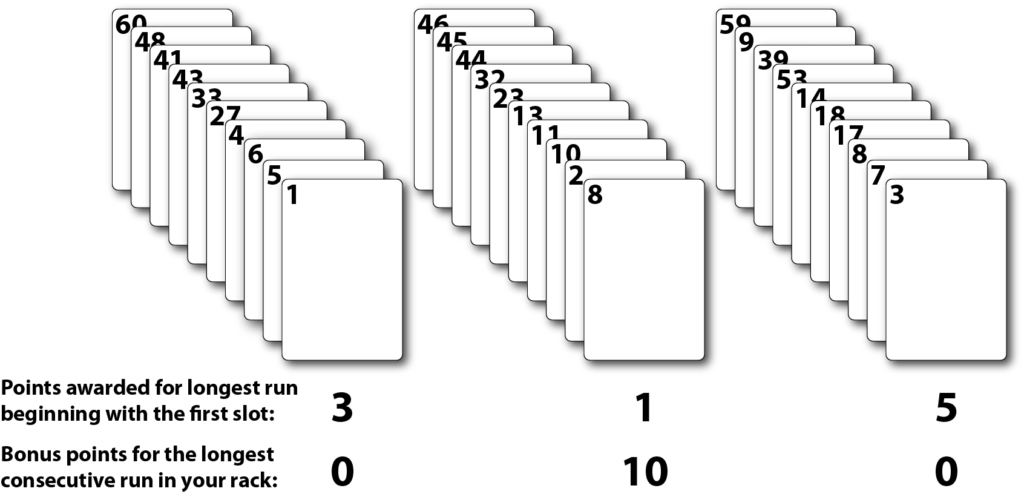

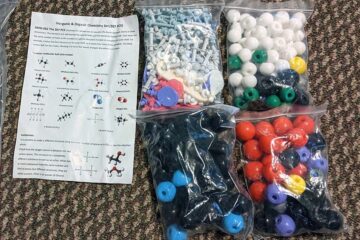
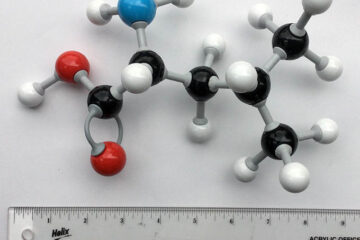
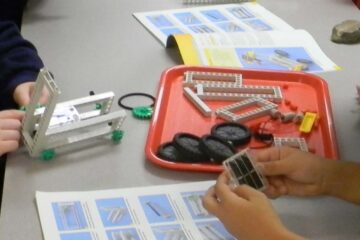
0 Comments